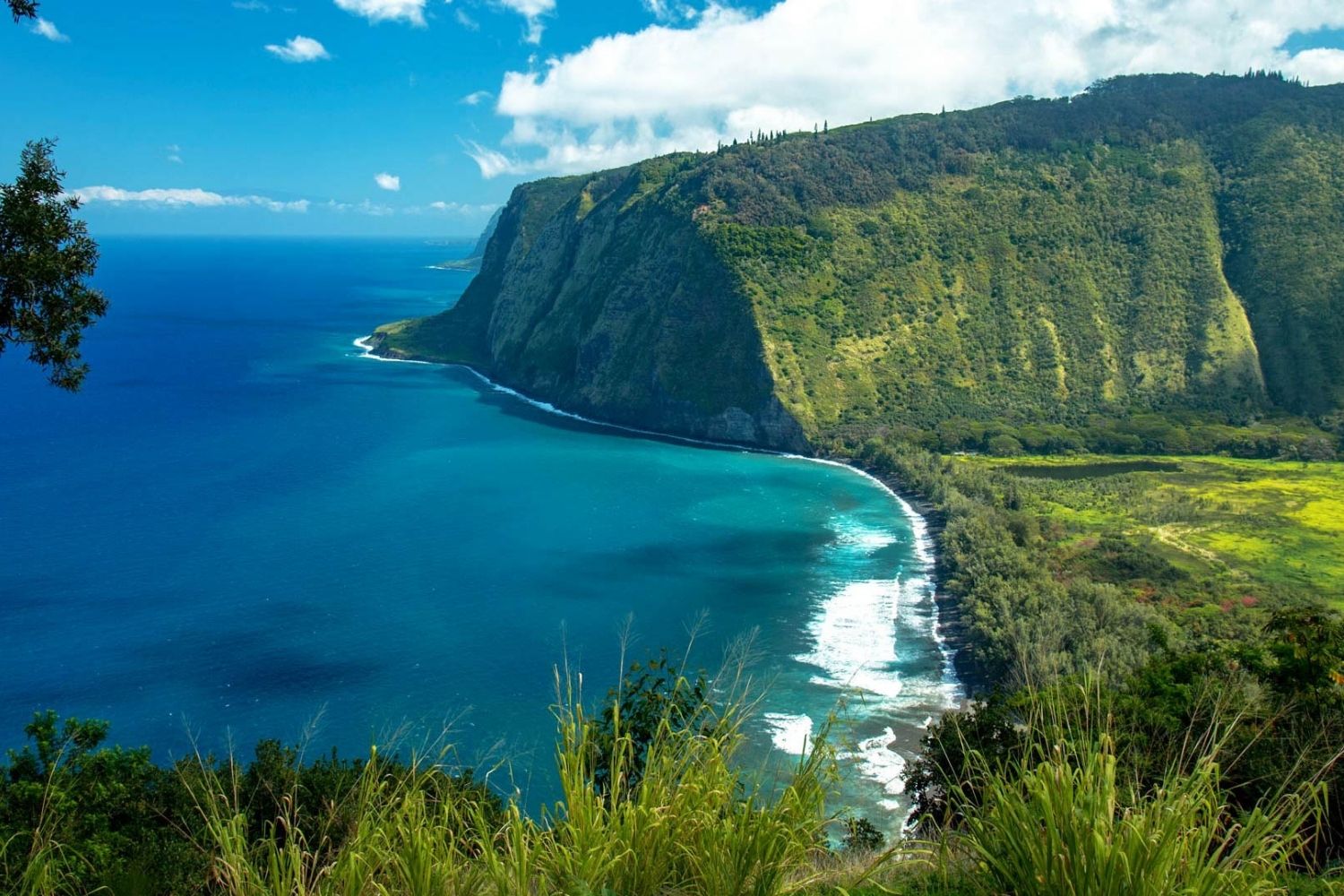Secrets Of Hawaii’s Waipio Valley Terraces

Have you ever wondered about the hidden gems of Hawaii? One such gem is the Waipio Valley Terraces. This lush, green valley on the Big Island is a paradise for nature lovers. Imagine cascading waterfalls, black sand beaches, and ancient taro fields. The valley is steeped in history and culture, offering a glimpse into traditional Hawaiian life. Hiking trails lead you through breathtaking landscapes, while the valley floor reveals a serene, untouched world. Whether you're an adventurer or someone seeking peace, Waipio Valley has something for everyone. Ready to uncover the magic of this Hawaiian treasure? Let's dive in!
Secrets of Hawaii's Waipio Valley Terraces
Waipio Valley, often called the "Valley of the Kings," is a lush, green paradise on Hawaii's Big Island. Known for its dramatic cliffs, black sand beaches, and cascading waterfalls, the valley also hides a lesser-known treasure: the ancient agricultural terraces. These terraces, built by early Hawaiian settlers, are a testament to their ingenuity and deep connection to the land. Let's uncover the secrets of these remarkable terraces.
The Ancient Engineering Marvels
The terraces in Waipio Valley are a marvel of ancient engineering. These structures were designed to maximize agricultural productivity in a challenging environment. Here are some of the most fascinating terraces you can find:
Kalo Terraces: These terraces were primarily used for growing kalo (taro), a staple in the Hawaiian diet. The early Hawaiians created an intricate irrigation system to ensure the kalo fields were always flooded with fresh water.
Sweet Potato Terraces: Unlike the kalo terraces, these were built on drier slopes. Sweet potatoes thrived in the well-drained soil, providing a vital food source for the valley's inhabitants.
Banana Terraces: These terraces were often found in the more shaded areas of the valley. The banana plants benefited from the cooler, moist conditions, producing abundant fruit.
The Cultural Significance
The terraces are not just agricultural feats; they hold deep cultural significance. They reflect the early Hawaiians' respect for the land and their sustainable farming practices. Here are some terraces with rich cultural stories:
Sacred Terraces: Some terraces were reserved for growing plants used in religious ceremonies. These sacred spaces were often located near heiau (temples) and were tended with great care.
Community Terraces: These terraces were communal farming areas where families worked together to grow food. They fostered a strong sense of community and cooperation among the valley's residents.
Royal Terraces: Certain terraces were designated for the ali'i (chiefs). These terraces were often larger and more elaborate, reflecting the high status of the chiefs.
The Natural Beauty
The terraces are set against a backdrop of stunning natural beauty. The valley's lush vegetation, towering cliffs, and cascading waterfalls create a breathtaking landscape. Here are some terraces that offer the best views:
Cliffside Terraces: These terraces are perched on the steep valley walls, offering panoramic views of the valley floor and the ocean beyond. The hike to these terraces is challenging but rewarding.
Waterfall Terraces: Located near some of the valley's many waterfalls, these terraces benefit from the constant mist and abundant water supply. The sound of cascading water adds to the serene atmosphere.
Forest Terraces: Nestled within the dense forest, these terraces are surrounded by towering trees and vibrant plant life. The forest provides shade and a cool environment for growing a variety of crops.
The Modern-Day Efforts
Today, efforts are being made to preserve and restore the ancient terraces. These initiatives aim to honor the legacy of the early Hawaiians and ensure that future generations can appreciate these remarkable structures. Here are some terraces involved in these efforts:
Restoration Terraces: Volunteers and local organizations are working to restore these terraces to their former glory. They clear overgrown vegetation, repair irrigation systems, and replant traditional crops.
Educational Terraces: Some terraces are used as educational sites where visitors can learn about traditional Hawaiian farming practices. These terraces serve as living classrooms, teaching the importance of sustainability and cultural heritage.
Research Terraces: Researchers study these terraces to gain insights into ancient agricultural techniques. Their findings help improve modern farming practices and contribute to the preservation of Hawaiian culture.
The Magic of Waipio Valley Terraces
Waipio Valley Terraces offer a unique glimpse into Hawaii's rich history and natural beauty. These ancient agricultural marvels, carved into the valley's lush landscape, showcase the ingenuity of early Hawaiian farmers. Exploring the terraces, you can feel the connection to the past and the land's enduring spirit. The valley's stunning waterfalls, vibrant flora, and serene atmosphere make it a must-visit destination for nature lovers and history buffs alike. Whether you're hiking, taking a guided tour, or simply soaking in the views, Waipio Valley Terraces provide an unforgettable experience. Don't miss the chance to witness this hidden gem on your next trip to Hawaii. The magic of Waipio Valley Terraces is waiting to be discovered, offering a peaceful retreat and a deeper understanding of Hawaii's cultural heritage.

